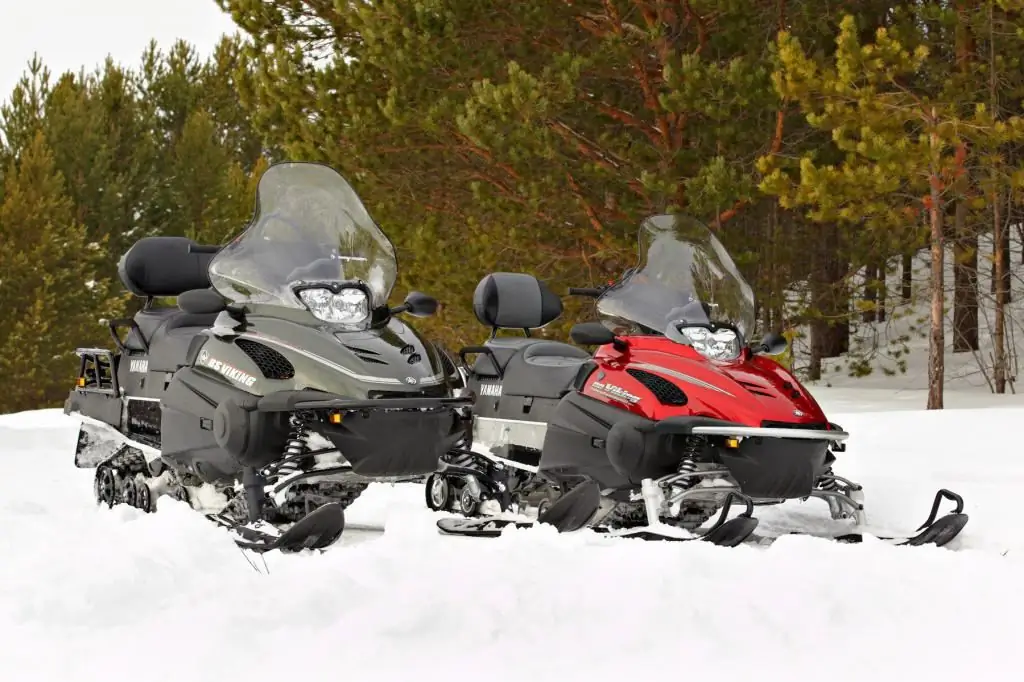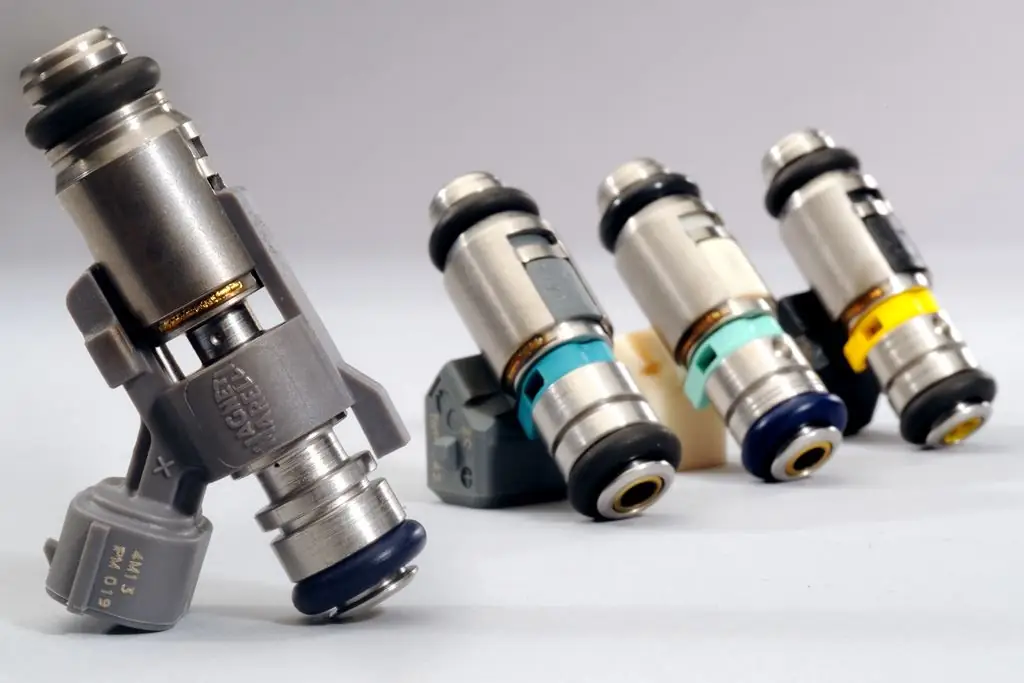2026 Author: Erin Ralphs | [email protected]. Last modified: 2025-01-22 21:14:12
One of the significant omissions of the Russian automotive industry is the lack of a mass passenger diesel engine. In view of this, local manufacturers have to use foreign analogues. The development of such motors began only in the second half of the last century, and the mass version has not yet appeared. The following are diesel engines on VAZ cars.

Background
The first experimental diesel cars appeared in Europe in the 30s. of the past century. In the USSR, this happened much later for several reasons.
Firstly, such power units are more difficult to manufacture compared to gasoline counterparts.
Secondly, the diesels of that time were significantly behind them in terms of performance.
Thirdly, diesel engines had pronounced negative performance: high noise level, cold start problems, low environmental friendliness.
Fourthly, in those days, gasoline wasvery cheap, so even some heavy equipment was equipped with gasoline engines. For these reasons, diesels were mainly used in heavy vehicles, where they were more relevant than gasoline engines due to their high torque.
One of the first Soviet passenger cars that received a diesel engine was the GAZ-21, and then its export analogue: in the 60s. in Belgium, the car was equipped with several variants of foreign-made naturally aspirated engines.
In the 70s. began the active distribution of diesel engines on cars of small and medium classes. The main reason for this was the energy crisis of 1973. Passenger diesel engines by that time had developed significantly. They outperformed gasoline counterparts in terms of economy and durability by 1.5-2 times, due to the greater strength of the parts. Productivity has also been improved through the use of turbines.
The first VAZ diesel
At the Volga Automobile Plant, the development of diesel engines for passenger cars began in the 80s. The designers decided to build a motor using parts produced using gasoline technology, tested on project 2108. They faced the problem of the lack of fuel equipment for passenger diesel engines.
As a result, on the basis of block 2103, an atmospheric power unit VAZ-341 with a volume of 1.45 liters and a power of 55 liters was created. With. It is distinguished by a pre-chamber design, which implies mixture formation not in the piston zone, but in a separate chamber. The electronics were missing. The distribution of fuel among the cylinders was carried out by a high-pressure fuel pump. ByThe design of the VAZ diesel engine is similar to the Ford and Volkswagen engines of the early 80s. It is mentioned that the engine of the latter was taken as a model during development.
According to the test results, it was confirmed that it is unacceptable to use standard "gasoline" spare parts. Diesel VAZ, like other engines of this type, is characterized by increased loads due to a higher compression ratio. In view of this, many elements lacked strength, especially the crank mechanism and the piston group. The situation was exacerbated by poor manufacturing accuracy.
Based on this, in 1984 it was decided to create a 1.7 liter diesel engine based on the VAZ-2106 using elements 21083.
In 1986, a turbocharged version of the 3411 was created with a capacity of 65 hp. With. and 114 Nm and released two Niva equipped with it with an index of 21215. However, they soon failed.
And yet, the VAZ-2105 with the 341st engine, which received the index 21055, passed state tests in 1986-1988. However, despite the unification of the engine with gasoline, the car was not put into production. This was due to many reasons. One of the main ones is the lack of state financial support.
Diesel series
The next time VAZ took up the development of diesel engines in 1996 together with BarnaulTransMash. The terms of cooperation assumed that the second enterprise would produce power units developed by VAZ. A family of three engines was created.

The 341st engine, increased to 1.52 liters of volume, became the initial one. Moreproductive engine 343 had a volume of 1.8 liters. The most powerful option is the same VAZ diesel engine equipped with an IHI turbine, with an index of 3431. The engines received Bosch fuel equipment.
In accordance with this, we have developed a range of diesel modifications of standard models. Such engines were planned to be used on utility vehicles. So, station wagons 21045 and 21048 were planned to be equipped with naturally aspirated versions 341 and 343, respectively. On "Niva" 21215-50 and 21215-70 it was supposed to install 1.8 l atmospheric and turbocharged engines, respectively, on VAZ-21315 - only 3431.
By 2000, the Barnaul plant mastered the production of these diesel engines, and as part of pilot production, the installation of a diesel engine on the VAZ-2104 and 2105 began. These cars were produced in small batches.
Despite the low performance, the motor fit the machines. With the modest performance of the gasoline power unit, the decrease in dynamics was not particularly significant for such models, but efficiency increased markedly. At the same time, the engine had the same problems as the first 341st VAZ diesel engine: due to the low mechanical strength of the piston group, it turned out to be very short-lived. The engine resource was 30-40 thousand km. Upon reaching such a mileage, a major overhaul of the VAZ diesel engine was required, which consisted in replacing the cylinder block together with the piston group.
Over time, many technological problems have been solved, as a result of which the durability of engines has increased. However, in 2003, the VAZ-21045 was discontinued. The remaining 500 VAZ-341 engines were installed on sedans,received the index 21055. In just 3 years, about 6,000 diesel cars were produced.

Reason for failure
Mass production of diesel passenger cars failed for several reasons. The main one is the unprofitability of the production of such motors due to the significantly outdated design. The engines had the same pre-chamber layout as the first 341st prototype, and lagged significantly behind modern analogues in terms of performance and environmental friendliness. To achieve acceptable performance, it was necessary to create a motor of a different design. Independent development was considered unprofitable, and there were no technical partners for this. In addition, VAZ products sold well even without a diesel engine.
Borrowed Engines
Since there was no own mass-produced passenger diesel engine, VAZ repeatedly borrowed third-party engines.
So, in 1981, the possibility of converting a VAZ-2121 gasoline engine into a diesel one was considered with the participation of Porche.
From 1987 to 1990, the manufacturer, together with the German importer Deutsche Lada, developed a plan to create an export version of the Niva with a Volkswagen power unit. However, this company refused to adapt its 1.9 liter engine to the Niva platform.
In 1993, we managed to establish cooperation in the same way with Peugeot. By order of the French importer Jean Poka, the manufacturer adapted the 1.9 liter XUD-9L engine for installation on the VAZ-2121. The manufacture of cars was carried out by Lada-Export. The usual "Niva" were delivered there, and the standard motorchanged to French. In total, about 6000 of these cars were produced for France, Spain, Italy and other European markets.
Besides, in Italy Martorelli equipped Niva with VM and FNM engines.
However, with the introduction of Euro-2 environmental standards, small-scale production of diesel Nivs was completed.
In 1998, together with Peugeot and Martorelli, VAZ tried to establish the production of Niv with a Peugeot XUD-9SD engine. However, work also had to be stopped due to the introduction of Euro-3 standards.
In addition, from 1995 to 1997, Samara was equipped with the PSA TDU5 engine from Peugeot 106 and Citroen Saxo with third-party attachments and original mounts for the French and Benelux markets.
Latest experiments
In 2007, the FNM engine was installed on the Chevrolet Niva for individual orders by "Theme Plus".
In 2014, Lada 4x4 experimented with 1.3 l 75 l. With. Fiat Multijet engine. However, it was not compatible with the transmission due to torque limitation, nor with analog wiring due to the CAN bus.
Super-auto explored the possibility of installing a Renault Duster diesel engine on the Lada 4x4 1.5L by 2015. In addition, an experimental car with a 100-horsepower 1.8L engine was created.
Diesel design
The initial power unit of the series was created by upgrading the first 341st VAZ engine: the diesel engine received a piston stroke increased by 4 mm (84 mm). Thanks to this, the volume increased from 1.45 to 1.52 liters. The cylinder head is made of aluminum,guide bushings, valve seats - from alloyed cast iron, inserts of combustion chambers - from heat-resistant alloy. The gas distribution mechanism was borrowed from the VAZ-2108. The working surface of the valves was reinforced by electromelting. Crankshaft - from 2103 with increased rigidity of tolerances for spread of moves. We increased the rigidity of the casting 2103. We installed glow plugs. The motor was equipped with a starter with a power of 1.7 kW (1.9 for the VAZ-21055). This required a high-capacity battery (60 or 65 Ah). In addition, a Bosch fuel pump and a vacuum pump are installed to create a vacuum in the brake booster.
There was a derated modification 3413, designed for a small tractor and an electric generator drive. It differs from the usual 341 engine by limiting the maximum speed to 3000 instead of 4800.
1.8L engines created by increasing the bore from 76mm to 82mm.
There are turbo options 1, 45 l 341 engine (3411) and VAZ-343 (3431 with IHI turbine)
Specifications
As noted above, due to the outdated design, the VAZ-341 has low productivity compared to its counterparts of those times. Its power is 54 liters. With. at 4600 rpm, torque - 92 Nm at 2300 rpm. That is, even according to the second indicator, it is inferior to a gasoline engine (103 Nm for the VAZ-21043). More low-rpm torque is provided by a different performance curve and a reduced gear ratio.

Version 3413 derated to 32 hp. With. at 3000rpm.

Naturally, a 1.8 liter VAZ diesel is more productive: technical specifications are 65 liters. With. at 4600 rpm and 114 Nm at 2500 rpm.

The turbocharged version develops 80 hp. With. at 4600 rpm and 147 Nm at 2500 rpm.
Diesel vehicles
Installation of a diesel engine on the VAZ-2104 was carried out in the Department for the operation and repair of VAZ vehicles. Pilot production began in 1998, releasing a batch of 50 cars with 341 diesel engines (21045).

Later they started testing the car with the 343rd engine (21048) and its refinement (they tried to increase the resource to 150 thousand km). It was planned to establish production by 2005, but this did not succeed.
VAZ-21315 was prepared for release in 2002, but also not launched.

Features
The diesel wagon differs in some design features from the petrol VAZ-2104. Due to the greater mass, the diesel engine required the installation of reinforced front suspension springs. The main pair was replaced from 4, 1 to 3, 9. To compensate for the increased noise level from the diesel engine, additional sound insulation was installed in the engine compartment (on the hood cover and crankcase protection). The exhaust pipe was wrapped in a loop to avoid soot contamination of the right lamp. The instrument panel now has an indicator for heating up glow plugs and a button for heating the fuel filter (with no indicator for turning it on).
Reviews
Shortly after the appearance, the journalists of "Behind the wheel" tested the VAZ diesel station wagon. Reviews indicate a more confident operation of the engine at low speeds. So, you can even get under way from the 5th gear, and even traction begins from 30 km / h. When driving fast, on the contrary, you will have to switch much more often than on a gasoline car, due to the shortened main pair. At the same time, in any case, the dynamics of a diesel car lags far behind. Only at low speeds there is a slight advantage.
In acceleration to 100 km/h, the petrol VAZ-2104 is 8 seconds faster. In addition, the diesel car is inferior in maximum speed by 13 km / h. When accelerating from 20 to 90 km / h, the gap is less (about 3 s). In addition, according to the reviews of the publication "Autoreview", the diesel engine has slower reactions to the gas pedal.
As for the increased noise level that such a motor usually characterizes, the VAZ diesel is noticeably louder at idle (by 6-8 dB (A)). With increasing speed, the difference decreases by 1-3 dB(A), then disappears.
As a result of tests, journalists received a 10% difference in average fuel consumption in mixed conditions. However, the financial benefit from using a diesel engine, taking into account the prices of automotive fuel at the time of testing, was 36%. Journalists calculated that the cost of the car, which was $1,300 more, paid off for 180,000 km.
According to the reviews of those who tested the VAZ-21048, it turned out to be much more balanced and, due to its greater traction, it made it possible to switch much less frequently.
With the same motor well-behavedshowed "Niva", especially off-road.

VAZ-3411 turned out to be similar in character to the 2121 engine. Like a gasoline engine, it performs better at high speeds. At the same time, at low speeds, the thrust is lower, even than that of the VAZ-21213, that is, the turbo lag is pronounced.
Performance
Due to a heavier engine, the curb weight of the VAZ-21045 increased to 1.06 tons (by 40 kg compared to 21043), the gross weight - up to 1.515. According to the manufacturer, acceleration to 100 km / h takes 23 seconds (6 s more), maximum speed - 125 km / h (18 km / h less). Fuel consumption is 5.2 liters at 90 km/h, 7.5 liters at 120 km/h, and 6.2 liters in urban areas (7, 9, 9, 9, 8 liters for 21043, respectively).
The car with the 343rd engine is closer in dynamics to the petrol station wagon VAZ. The 1.8L diesel delivers 100 km/h acceleration in 19 seconds and a top speed of 133 km/h.
The acceleration of the VAZ-21215-50 to 100 km/h takes 25 s, the maximum speed is 127 km/h against 19 s and 137 km/h for 21213.
VAZ-21215-70 is equal to the gasoline Niva in terms of acceleration dynamics and lags behind in maximum speed by 7 km/h.
Recommended:
"Infiniti QX70" diesel: owner reviews, specifications, pros and cons

On the streets, more and more often you can meet a Japanese crossover of unusual appearance - the Infiniti QX70. Despite the cost far beyond 2 million rubles, he finds buyers. The car owes such popularity to guaranteed Japanese quality. Let's see if it's really worth the money. Let's discuss what the owners think about the car
Diesel ATV: description, specifications, photos and reviews

Relatively recently, fans of extreme driving and tourist trips have massively begun to show interest in diesel-powered ATVs. Most motorists are not embarrassed by the fact that there are very few such models on the market, and until recently almost no one knew about their existence
"Yamaha Raptor 700": technical specifications, engine power, maximum speed, features of operation and care, reviews and owner reviews

Japanese company Yamaha, specializing in the development and production of motorcycles, is not limited to motorcycles and develops scooters, snowmobiles and ATVs. One of the best ATVs of the Japanese company is the all-terrain vehicle "Yamaha Raptor 700"
"Yamaha Viking Professional": technical specifications, engine power, maximum speed, operation and maintenance features, reviews and owner reviews

"Yamaha Viking Professional" - a real heavy snowmobile, designed to conquer mountain slopes and snowdrifts. From the curves of the front bumper to the roomy rear luggage compartment, the Yamaha Viking Professional literally speaks of its utility snowmobile
Carburetor and injector: difference, similarities, advantages and disadvantages of carburetor and injection engines, principle of operation and expert reviews

For more than a hundred years, the car has firmly established itself in our lives. During this time, managed to become a familiar, everyday means of transportation. Let's see what the difference is between a carburetor and an injector, what advantages and disadvantages they have

